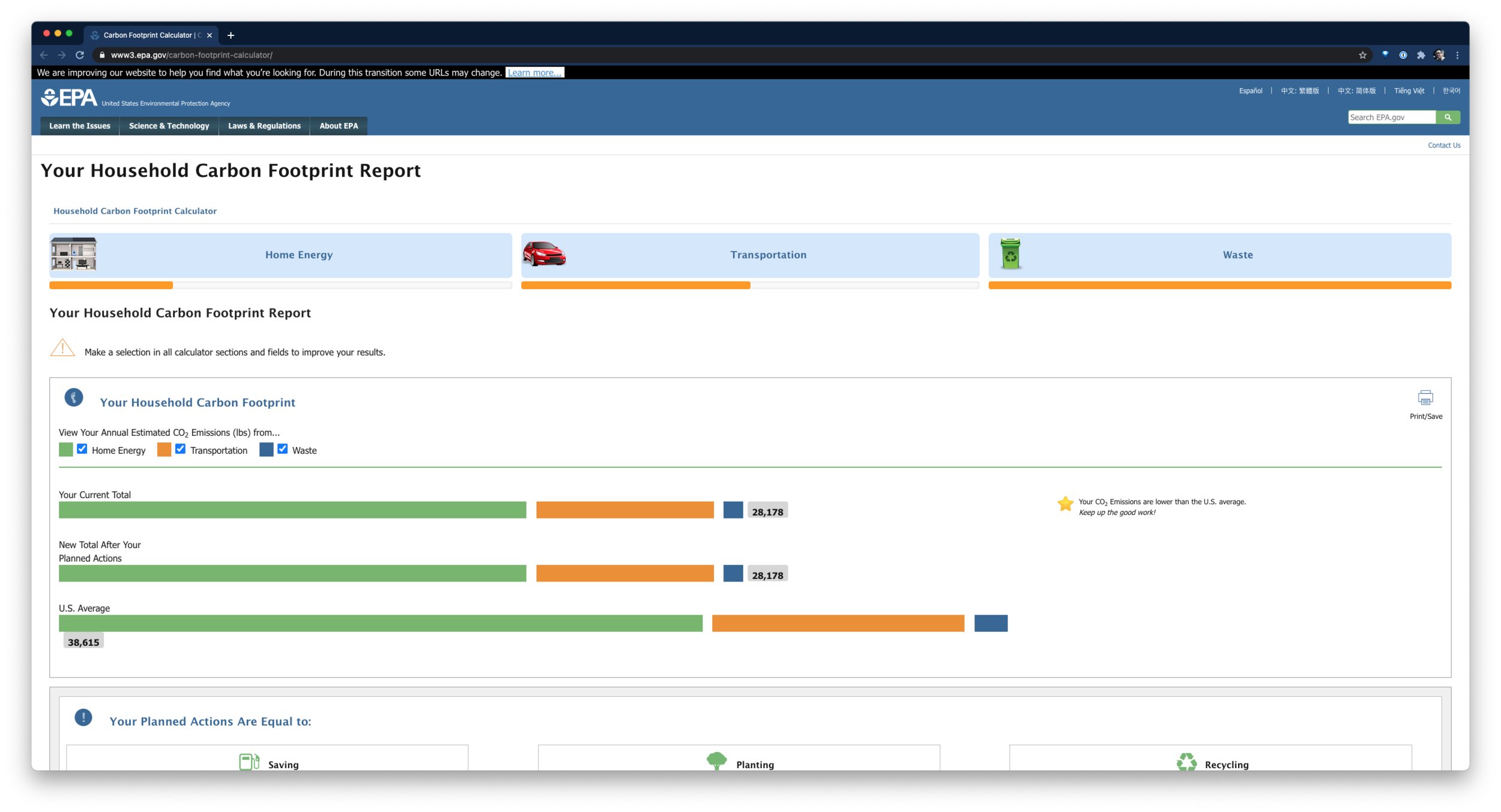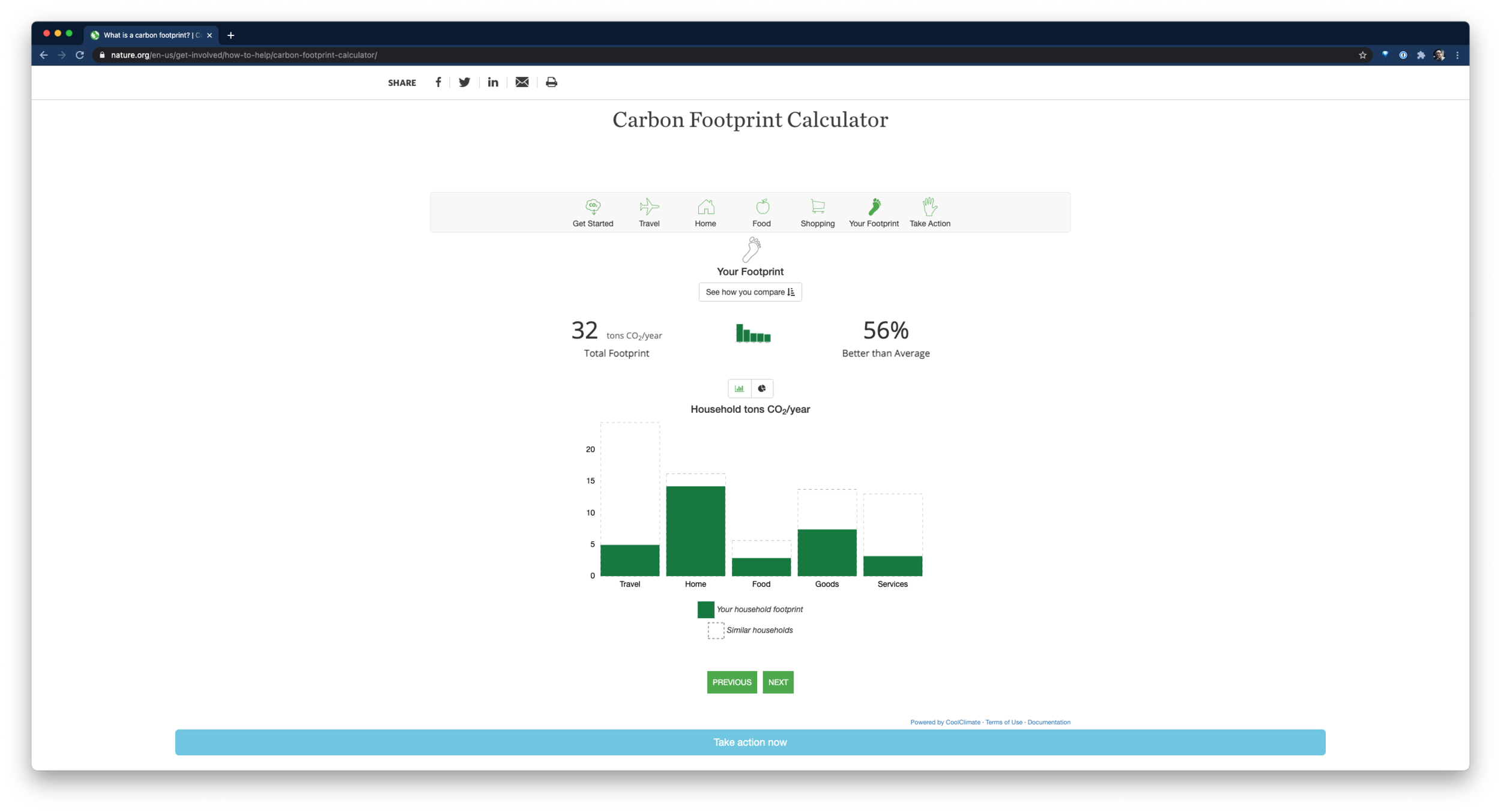Why Emissions Calculators Are the First Step to Impactful Changes
Transportation and housing account for more than half of all U.S. household emissions, both at home and overseas. Chart: The Conversation, CC-BY-ND Source: Environment International (2019)
During the Covid-19 pandemic, the combination of stay-at-home orders and government-enforced closures of local businesses caused home deliveries to soar. In the second quarter alone, UPS saw an increase of 22.8% in daily shipment volumes, accounting for over 21 million packages delivered daily. Because many of us have been forced to work from home, our household consumption has become very transparent. It almost seems like every hour another UPS, FedEx, or Amazon truck is driving by, making frequent stops down the block.
For households that are looking to reduce their impact on the environment, the logical first step might be to reduce shipments—after all, purchasing goods from Amazon often means engaging in a globalized supply chain that starts in China and ends up on your doorstep thousands of miles away. But a deeper look at our carbon footprint shows us that while shopping on Amazon may be wasteful, consumable goods only represent 8% of a household's total emissions, while not-so-visible utility emissions account for nearly 25% of a household's total emissions, surpassing every other category including transportation.
Carbon Scorecard
Last month, I finished James Clear's book Atomic Habits. While I found the entire book both fascinating and incredibly approachable, his public resources were by far the most meaningful in my journey to learn more about creating good habits and breaking bad ones.
The first of many resources included in the book is called the Habits Scorecard, in essence, it embodies one of his principles of creating good habits: Make it Obvious. The scorecard asks you to make a record of your day by taking account of the small daily steps you take throughout the day and scoring them with a - + or = (neutral) depending on your personal goals:
wake up =
turn off alarm =
check phone -
go to bathroom =
brush teeth +
get dressed =
get nori ready for walk +
make coffee +
Applying this process to quantify against an emissions scorecard can be helpful, but rather challenging and maybe even demoralizing. Because our goal is to reduce emissions by reducing consumption or adapting to low emission behaviors, the task should be targeted at demonstrating the emissions cost of each activity from a scale of low (+) to high (+++):
charge phone +
turn on lights +
turn on the heater (gas) +++
turn on AC +++
watch TV ++
hot shower (gas) ++
washing machine ++
dryer (gas) ++
dishwasher +
This scorecard can get old fast. It's an incredibly tedious process and the data is rather inaccessible to most. What is the cost of turning on a gas furnace vs. an electric AC unit vs. using a gas tankless water heater?
Luckily there are tools that help quantify the data for you in a reasonably intuitive way, including two from The Nature Conservancy and the EPA. But there is little initiative taken to demonstrate what can be done next short of a "Donate Now" or "Share Now" button. Fun, but what's next?
Carbon Footprint Calculator as a Service (CFCaaS)
The Carbon Footprint calculators are a great first step—creating an interactive form and handling the calculations in the backend helps take a lot of the work off of individuals. It may take some time and energy to make the calculations accurate (i.e. using exact kWh & therm usage), but it’s a great step in making household emissions transparent and accessible.
Enter Wren, a student-run startup out of USC turning personal carbon offsets into a monthly subscription. Only 3 months after launch (6/2019), the company already seen 500 people subscribe to a monthly payment to offset their personal emissions. But is it enough?
While commendable, the service stops short of creating a financially convincing model and relies on model citizens and households to do their part. There is a cap to generosity and good samaritans and I can see a pivot down the road that ties in with corporate social responsibility and ESG firms.
In my last post (Why Your Commitment to Sustainability Can Be Profitable), I wrote about how corporate responsibility has become a large commitment for a growing number of corporations — not just due to their commitments to doing good, but also the significant financial impact of supporting (or not supporting) causes.
That's why I'm impressed with Watershed, a verifiable SaaS tool that looks just like state-of-the-art software Stripe, and works with certified emissions data to help corporations determine their operational emissions and makes it possible to not only report on said emissions, but provides an action plan, powered by climate science. Climate solutions, empowered by intuitive software interfaces will be a driving force for awareness, shared responsibility, and ultimately reducing carbon emissions (and perhaps even empowering the investment into carbon capture and storage).





